Philips OLED769 is the entry-level OLED model from the Dutch manufacturer for 2024, but don't let that mislead you. OLED769 surprises with its image quality and several interesting features. Thanks to OLED technology, the colours are truly vibrant, and the contrast is very good – deep blacks and bright lights displayed on this screen make a difference, especially when watching evening series. When it comes to motion fluidity, OLED769 performs really well. The 120 Hz panel handles dynamic scenes excellently, whether it's sports or gaming. When playing on consoles, the TV doesn’t disappoint either – 4 HDMI 2.1 ports support VRR and ALLM, and the fast response time ensures smooth and responsive gameplay. And what about Ambilight? It's a classic Philips feature and one of those functions that either gets loved or hated. In this model, it works very well – the backlighting responds to the content on the screen and adds ambience, especially in a dark room. It's not something everyone will consider essential, but it makes an impression in the evenings – at least on us. As for the new TitanOS operating system, it leaves us with mixed feelings. It runs quickly, but it lacks some popular applications. More demanding users may miss the flexibility that previous Philips systems (GoogleTV) offered. Philips OLED769 is a good choice for those looking for a TV with beautiful picture quality and the unique addition of Ambilight. The image quality and motion fluidity will satisfy most users, and the minor limitations of the operating system won't be a hurdle if you're focusing on basic apps. It's a solid option for both watching movies and playing games.
- Matching (Score)
- Our verdict
- TV appearance
- Where to buy
- Contrast and black detail
- HDR effect quality
- Factory color reproduction
- Color reproduction after calibration
- Smoothness of tonal transitions
- Image scaling and smoothness of tonal transitions
- Blur and motion smoothness
- Console compatibility and gaming features
- Input lag
- Compatibility with PC
- Viewing angles
- TV efficiency during daytime
- Details about the matrix
- TV features
- Apps
- Playing files from USB
- Sound
Philips OLED769 vs Hisense U7Q
Direct compare
OLED769 / AMIBLIGHT TV
U7Q / U78Q

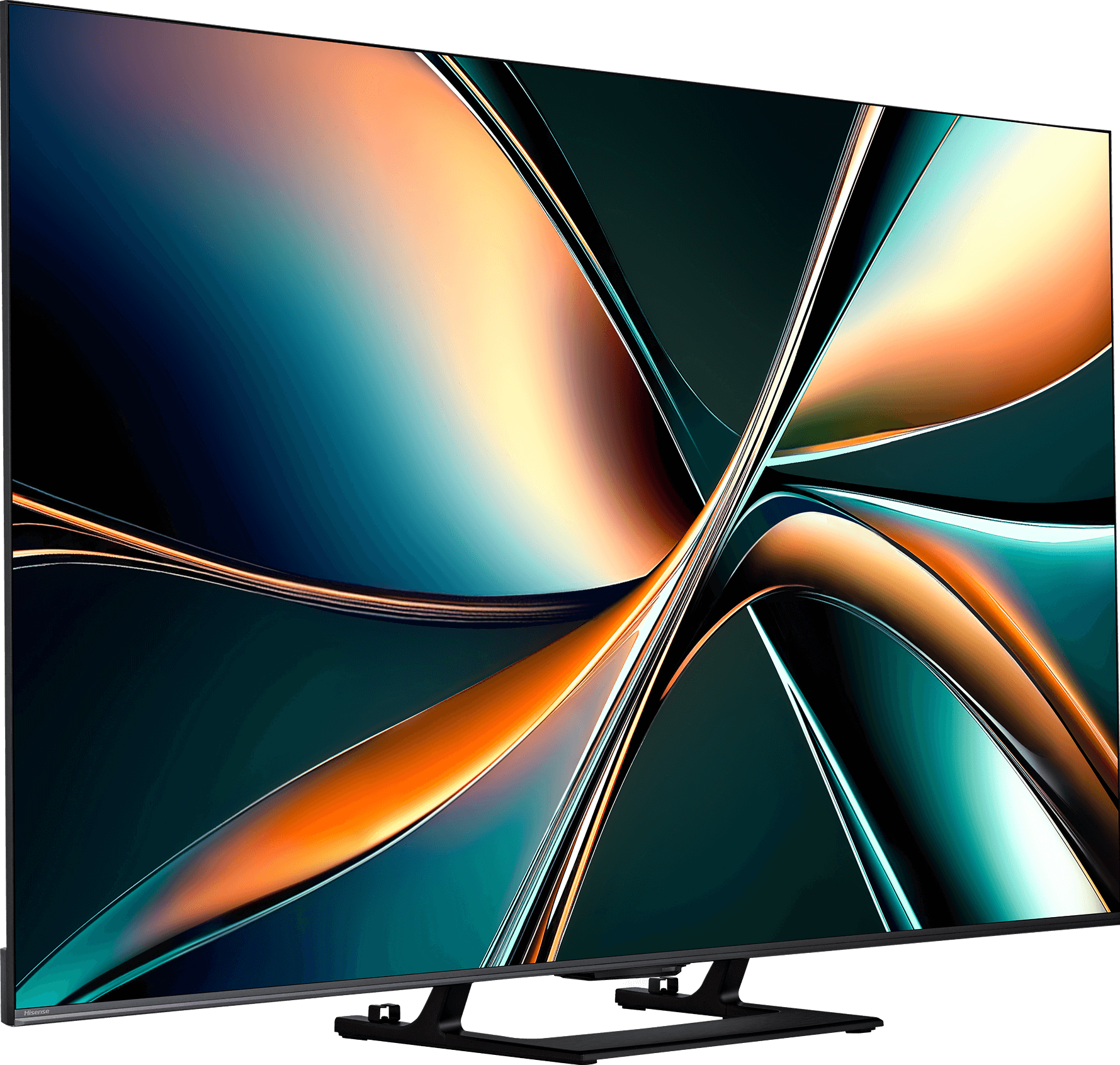
Panel type: WRGB OLED
Resolution: 3840x2160
System: Titan OS
Model year: 2024
Complete the survey to find out the result

Panel type: LCD VA
Resolution: 3840x2160
System: VIDAA
Model year: 2025
Complete the survey to find out the result

Overall rating
7.3
7.2
Movies and series in UHD quality
7.6
6.7
Classic TV, YouTube
8.4
6.8
Sports broadcasts (TV and apps)
8.3
6.5
Gaming on console
9.2
8.0
TV as a computer monitor
7.6
8.6
Watching in bright light
4.6
6.2
Utility functions
5.6
8.9
Apps
6.2
7.7
Sound quality
6.7
7.2
Complete the survey to find out what fits your preferences
Advantages
Great contrast
Ideal choice for gamers and sports - HDMI 2.1, 120Hz, low input lag
3-sided Ambilight system
Excellent colour reproduction after calibration
Great contrast and deep black
Very good fluidity of tonal transitions (close to reference level)
High brightness
Supports 4K 144 Hz and even 240 Hz in Full HD
VRR, ALLM, G-SYNC – a full package for gamers
Low input lag
Pleasant sound with light bass
Many classic TV features built into the VIDAA system
Disadvantages
Poorly developed operating system - TitanOS
Average brightness
No support for HGiG (makes setting HDR on consoles difficult)
Brightness management issues
Poor viewing angles – typical for VA panels
Closed VIDAA system – missing some apps
Our verdict
Hisense U7Q is one of the most interesting Mini-LED TVs in its price segment, clearly demonstrating that Hisense is starting to make a mark in the market not only through the price-to-performance ratio but also through increasingly refined picture quality. Let's start with what truly impresses: the contrast and black levels are at a level that was recently unattainable in this price range. Combined with smooth tonal transitions, solid brightness, and a fast 144Hz panel, the U7Q becomes a TV that excels in both movies and gaming. Gamers will find almost everything they can expect here – support for variable refresh rate (VRR), automatic game mode (ALLM), very low input lag, and even 240Hz in Full HD. All of this makes the U7Q suitable for both next-gen consoles and PCs. However, there are some downsides. When it comes to HDR content, one might want to say: “untapped potential” – you may ask why? The TV, due to its algorithms, dims small bright elements or excessively boosts them, which can spoil the viewing experience. There is also a lack of support for HGiG, the feature that would better match the console with the TV regarding HDR. In summary, briefly – the Hisense U7Q is a very versatile and complete TV that has its imperfections but makes up for them in many key aspects. For gamers, occasional movie watchers, or anyone looking for good equipment for everyday use – it’s one of the most cost-effective options in 2025. You just need to know what compromises you’re willing to make – and then it’s hard to be disappointed.
TV appearance

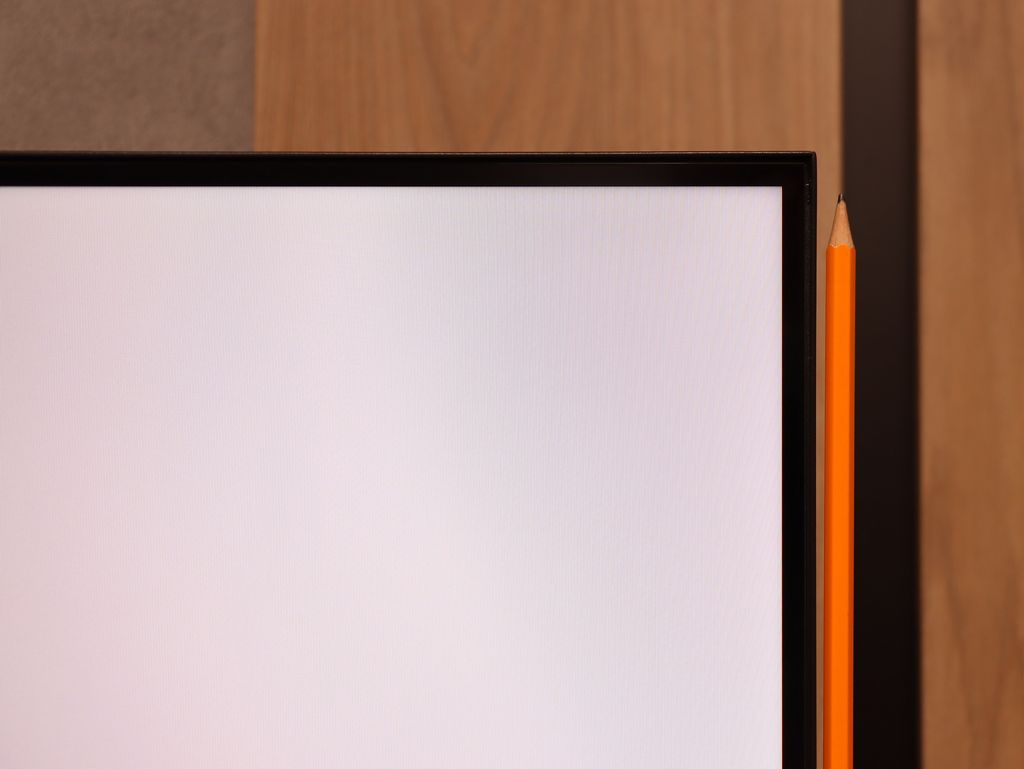
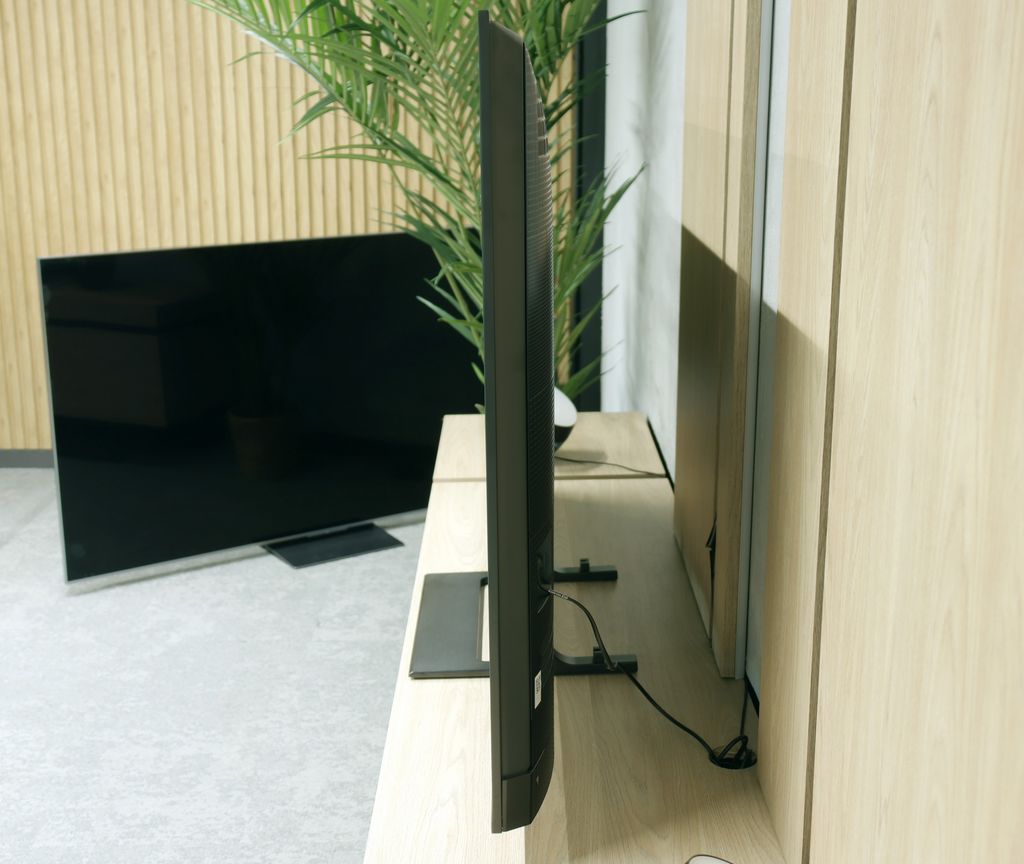
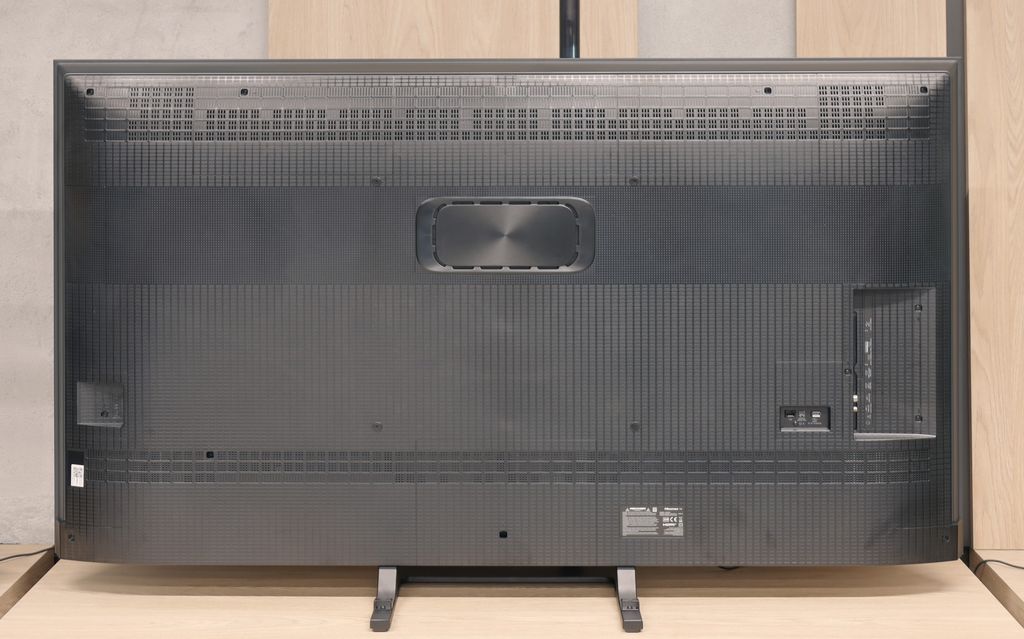
Contrast and black detail
10/10
7.5/10
Local dimming function: Yes, number of zones: 220 (10 x 22)
Contrast:

Result
∞:1

Result
∞:1

Result
∞:1

Result
∞:1

Result
∞:1

Result
278,000:1

Result
28,800:1

Result
11,100:1

Result
10,800:1

Result
6,250:1
Halo effect and black detail visibility:


Philips OLED769 amaze with its black and contrast quality. Thanks to OLED technology, each pixel in this television is self-illuminating, allowing for complete shutdown of individual pixels. This means that black areas of the image are perfectly black, and the contrast is infinite. The effect is incredibly realistic, with excellent clarity and detail in dark scenes. The OLED panel used in Philips OLED769 is produced by LG, known as WOLED, ensuring the highest quality in black reproduction. As a result, the television offers contrast that is unattainable for traditional LCD televisions - even the best ones on the market.
U7Q is a Mini-LED backlit TV – just like the PRO version. What’s the difference? The version without the suffix simply has fewer dimming zones. In our 65-inch model with a VA panel, we counted 220 of them. And while that doesn’t impress as much as in the U7Q PRO, it still looks very good on paper for this price range. Alright, but how does it perform in practice? Surprisingly well. The contrast in the U7Q can reach up to 300,000:1, which provides a really solid black effect. In many scenes, it’s hard to find fault – the image has depth, and the highlights are well separated. Of course, Mini-LED is not OLED – so there are some limitations. In very challenging scenes with many dark details, the TV sometimes either ‘eats’ them, leaving a nice black, or slightly brightens the background, which can create a halo effect. That’s normal in this technology and should be taken into account. Despite these minor drawbacks – the contrast in the U7Q is really good.
HDR effect quality
6/10
4.6/10
Luminance measurements in HDR:

Result
609 nit

Result
707 nit

Result
801 nit

Result
775 nit

Result
261 nit

Result
521 nit

Result
160 nit

Result
351 nit

Result
98 nit

Result
674 nit
Scene from the movie “Pan” (about 2800 nits)


Scene from the movie “Billy Lynn” (about 1100 nits)


Static HDR10


Dynamic: Dolby Vision
Dynamic: Dolby Vision


HDR luminance chart:
Hisense U7Q
Luminancja HDR
Luminance of RGB colors
Philips OLED769
Luminancja HDR
Luminance of RGB colors
Philips OLED769 performs quite well, especially in movie scenes with small light points. The television surprises with its brightness, reaching around 800 nits, which is an impressive result. This means that small light sources, like street lamps at night or stars in the sky, are vivid and full of detail. However, the biggest challenge for this model is the scene with a full-screen sun glare. In such moments, the brightness drops to around 250 nits, which isn’t very impressive. This is a typical issue with cheaper OLED displays, which struggle to maintain high brightness across the entire screen.
Since the algorithms responsible for blacks are performing quite well, we expected a similarly good outcome when it comes to brightness and overall HDR quality. Unfortunately, we have to disappoint you a bit here.
The U7Q is quite a bright television – under the best conditions, it can reach around 800 nits, which indeed impresses in some scenes, especially in scenes like those from the movie The Meg. Bright segments can shine, and the HDR effect is noticeable. The problem arises when very small, bright elements appear on a dark background – for example, in Sicario 2 or in the second scene from Life of Pi. At such moments, the dimming algorithms operate too aggressively. Yes, the blacks look great at that point, but the brightest spots can almost completely disappear, causing the HDR effect to vanish and details to be barely visible. That’s just the charm of this technology in this price segment.
As a consolation, it is worth mentioning that the U7Q is marketed as a QLED (in practice, a PFS layer is used, which operates very similarly), and it can indeed display a wide colour gamut – a DCI-P3 coverage of around 94% is a very good result for this class.
Factory color reproduction
6.4/10
6.3/10


Factory Mode
After calibration
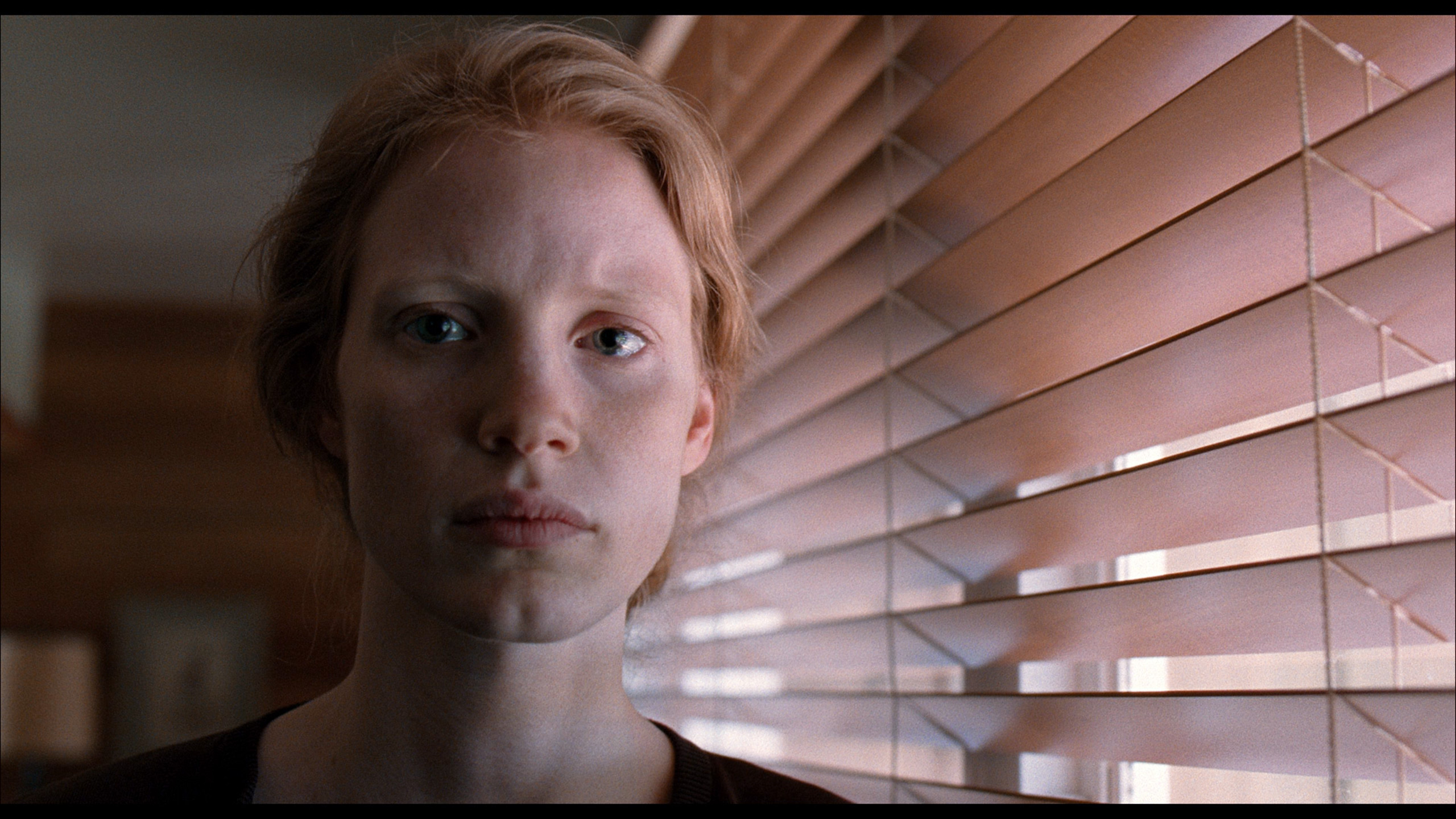
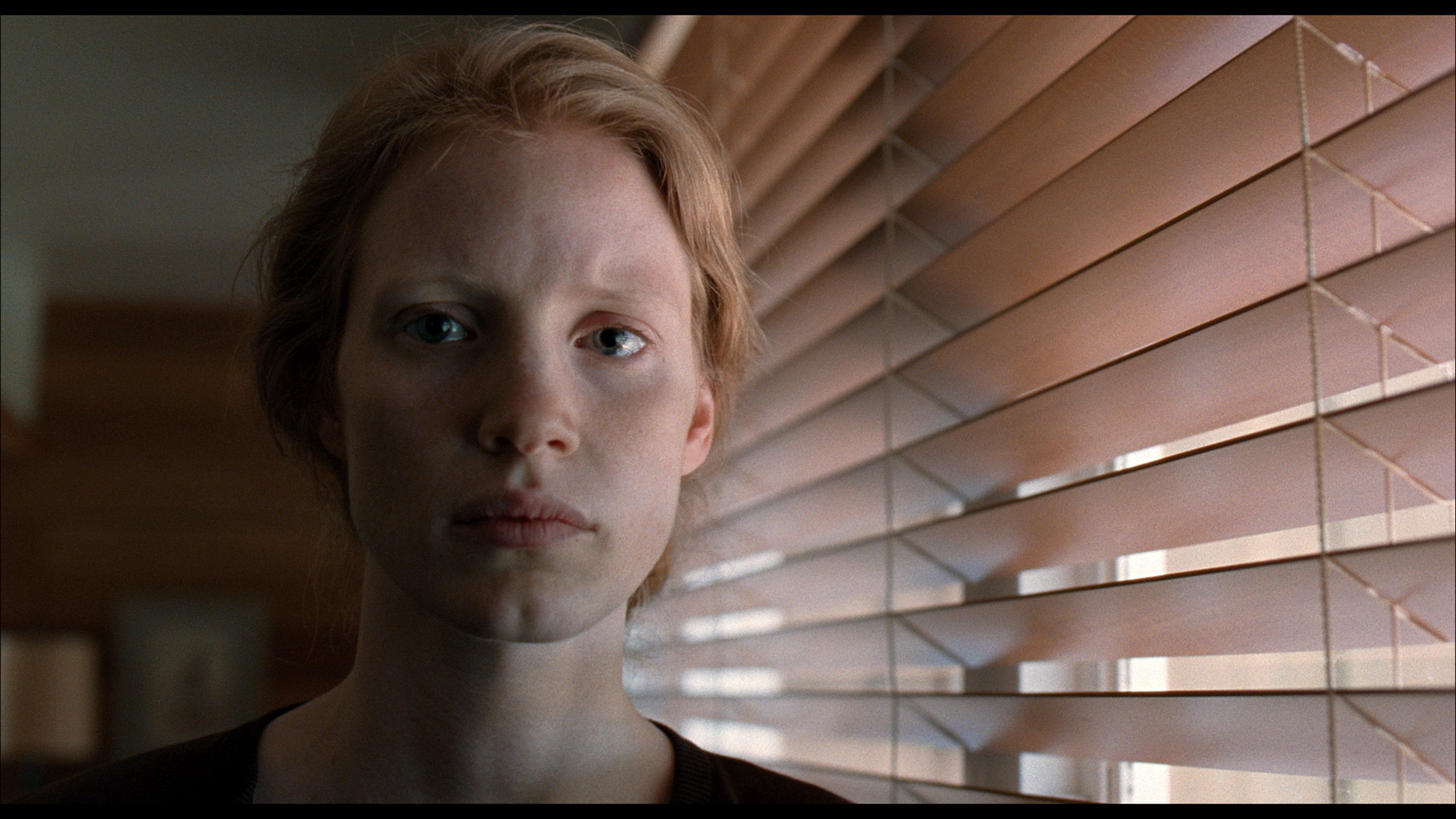
Factory Mode
After calibration
The "Film" mode turned out to be the best factory setting in terms of fidelity to the original material, and it was on this setting that we based our tests. However, like other factory modes, it was not without its flaws. Let’s take a closer look at what exactly went wrong in the SDR and HDR materials.
In both cases, the white balance was disturbed by excessive dominance of green and red colours. This phenomenon created a yellowish tint that spilled over the entire image, leading to issues such as yellowed whites and unnatural skin tones. These problems were clearly highlighted on the "ColourChecker" palette, where each of the samples was shifted towards warmer shades.
As for contrast and brightness, in the Philips OLED769, we can look at two key graphs: Gamma for HD content and the EOTF curve for 4K HDR content. In the case of the first graph, the gamma value is below the optimal level of 2.4, resulting in the bright parts of the image being lightened. This means that bright elements may be somewhat overexposed, losing detail and depth. Meanwhile, the EOTF curve for 4K HDR content performs really well. The graph shows that the television effectively reproduces details in both the brightest and darkest parts of the image, translating to a realistic and dynamic representation of scenes.
We tested the U7Q in the best possible picture mode, which is Filmmaker Mode. This mode is supposed to provide the most "cinematic" experience that aligns with the creators' intentions – straight out of the box. Unfortunately… even this professionally sounding name doesn’t guarantee a perfect image.
In our unit, the problem lay in the poorly set white balance. In both HD and 4K content, the image had too much blue and red, resulting in a slightly pinkish hue on the screen. It didn’t look terrible, but it was noticeable – especially in bright scenes and on white backgrounds. That alone could have been forgiven, but the biggest issue is managing brightness in HDR content. The EOTF curve from the measurements confirms what we saw earlier during scene tests: the television can overly dim the smallest bright elements, causing them to nearly disappear, or conversely – excessively brighten the brightest parts, which affects the naturalness of the image.
Color reproduction after calibration
8.8/10
7.4/10




After professional calibration, Philips OLED769 truly shines in terms of colour accuracy. The television has been completely rid of any yellow tint in both HD and 4K content. The Colour Checker test confirms that deltaE errors are minimal, occasionally exceeding 2, which means we can talk about almost perfect renderings of the director's vision.
When it comes to contrast, the situation is equally impressive. For 4K materials, there wasn't much to improve from the start, while the gamma graph has been significantly enhanced. As a result, dark and bright parts of the image are represented with greater accuracy, leading to realistic and dynamic scene reproduction.
The calibration has unlocked the full potential of this television, both in terms of colour and contrast. Philips OLED769 now offers vivid, natural images of high quality that will delight any user, whether they're watching movies or using other multimedia.
Thanks to specialist tools, we managed to correct the colour quality in SDR content to almost perfection. In materials with lower dynamics, delta E errors dropped below 0.5, which can be considered an almost reference result. The picture on television, YouTube, or classic Full HD looks really good after calibration. Well then – but where was it not so easy to improve the image? Primarily it concerns HDR quality content. Although we managed to somewhat "tame" the white balance and eliminate pink tints in most scenes, unfortunately, we did not have full control over brightness management. We set the local dimming settings according to the best observations – SDR: Medium, HDR: High – but the U7Q still did everything a bit its own way. There were still cases of overly strong dimming or brightening of details that calibration simply could not eliminate. And although the overall reception of content is much better, one must reckon that the U7Q will always have something to say at the end with "but".
Smoothness of tonal transitions
5.9/10
9.9/10












The gradation in Philips OLED769 unfortunately proves problematic in almost every scene from the test sequence. Particular difficulties arise in dark colours and around blacks. In these areas, in addition to the posterization effect, the image is accompanied by a solid amount of noise. The problem with tonal transitions is not limited to dark hues – it can also be seen in lighter elements, such as in a scene from the movie "Kingsman", where clear colour banding is visible around the sun. This phenomenon can significantly affect the visual experience, especially in scenes where black and dark shades play a crucial role. It's hard not to notice these imperfections, which can disrupt the viewing experience, particularly for viewers who value excellent image quality.
U7Q performs exceptionally when it comes to tonal transitions – we can confidently say that it’s nearly at a reference level, which is why this television receives one of the highest possible ratings from us in this category. The colour blends are smooth, clear, without any noticeable banding. In most scenes, everything looks just perfect, and any minor imperfections may only appear in very specific shots – though we hardly noticed them during testing.
Image scaling and smoothness of tonal transitions
7.2/10
6/10
Smooth transition function

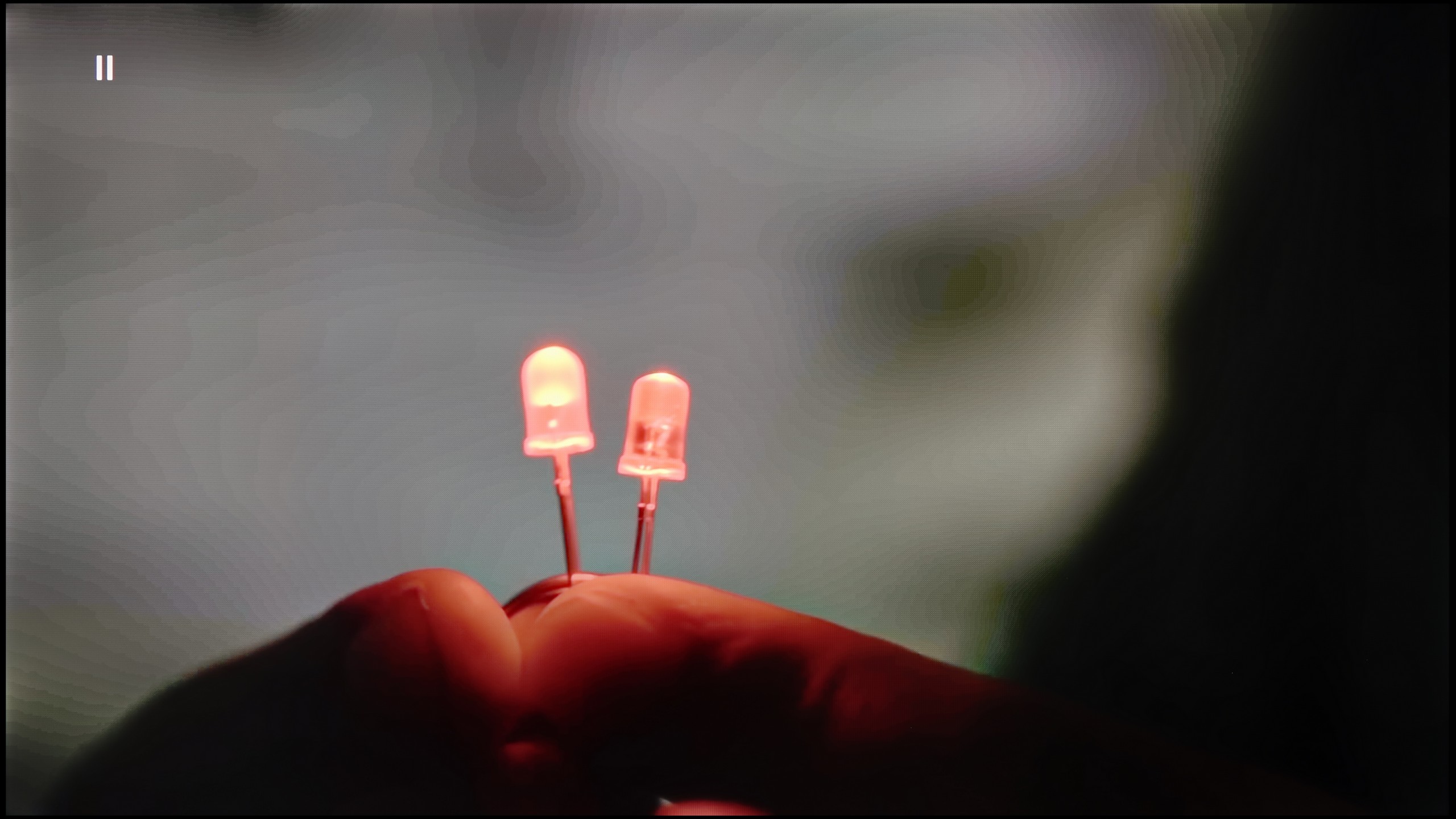
Image without overscan on the SD signal


When it comes to lower quality materials, the distortion reduction in the Philips OLED769 does well at smoothing tonal transitions, especially at the minimum setting. It's worth noting that at this setting, film grain isn't blurred, which is a pleasant surprise, as such negative phenomena often occur with other manufacturers. Overall, it's quite a decent solution. However, it should be noted that this setting doesn't work in HDR mode, where gradation issues are much more pronounced. In HDR mode, the television struggles with smoothing tonal transitions and may present more noticeable distortions and noise, reducing image quality in dynamic scenes.
As for digital processing, the Philips OLED769 performs well. The model in the picture isn’t overly jagged, and the branches in the background lack the characteristic artifacts. The television achieves this effect by avoiding artificial sharpening, which may be an advantage for some users. However, others may find this less appealing, as they prefer a more vivid, sharper image rather than a subtle effect. This effect can be mitigated by using a higher setting for the "Sharpness" parameter.
There are situations where we would like to smooth out tonal transitions a bit, especially in older materials – those with limited source quality. The U7Q has been equipped with a feature called “Smooth and Gradient Image,” but unfortunately… it works very poorly. In the “Low” option, the effects are practically unnoticeable, and other settings smooth out the details but don’t improve tonal transitions. The only positive thing is that the feature doesn’t interfere with the film grain, so it doesn’t ruin the natural structure of the image.
Fortunately, content scaling performs quite well. The image is not overly sharpened, there is no artificial clarity – and while it’s known that this isn’t the level of high-end TVs, the U7Q has no problem displaying really old content in a completely acceptable manner.
Blur and motion smoothness
8.3/10
7.5/10


Blur (native resolution, maximum refresh rate):






Blur (BFI function enabled):



Smużenie ():
Smużenie (1080p 240Hz):



Philips OLED769 features a multi-level motion smoother called "Motion Style," which will please users who value the ability to adjust motion fluidity in films. With this function, the image can be set to appear more stuttery or fluid, reminiscent of a theatrical effect. It's a great solution for those who want to tailor the displayed content to their visual preferences. Gamers will also not be disappointed, as the television, like most OLEDs, is equipped with a 120Hz panel. This ensures extraordinary fluidity and dynamic imagery. Unfortunately, Philips OLED769 does not have the BFI (Black Frame Insertion) feature, which could further enhance the smoothness and clarity of motion. Despite this limitation, the television still offers excellent visual experiences for both cinema lovers and gamers. This is definitely one of its strong points.
U7Q is a truly fast TV, much like its more powerful version “PRO”. At 4K resolution, it supports up to 144 Hz refresh rate, and if someone wants even more – in Full HD, you can achieve up to 240 Hz! This will mainly benefit PC gamers, but it’s worth appreciating – it’s a rare feature in this price segment. Right from the start, it’s clear that the U7Q has been designed with dynamic content in mind, such as games or sports. In films, we’re not left “out in the cold” either – the U7Q offers an “Ultra Motion Smoothness” feature, where with two sliders, you can adjust whether you want a smoother, theatrical picture, or something closer to cinematic style with a visible frame. It’s good that, like most manufacturers, we have a choice here and can customise it to our own preferences.
Console compatibility and gaming features
10/10
8.5/10
- ALLM
- VRR
- VRR range40 - 120Hz48 - 240Hz
- Dolby Vision Game Mode
- Correct implementation of HGIG
- 1080p@120Hz
- 1440p@120Hz
- 4K@120Hz
- Game bar



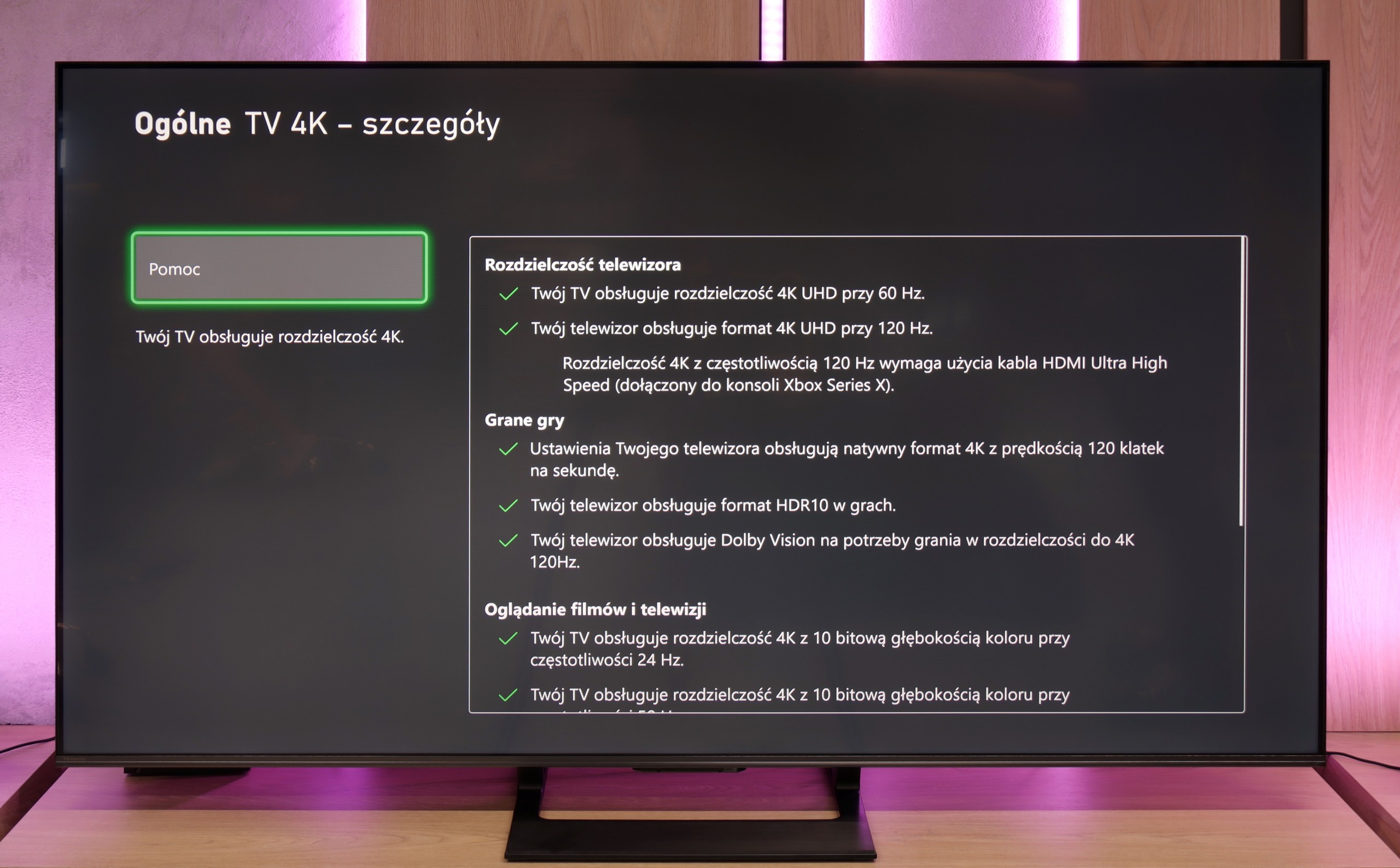



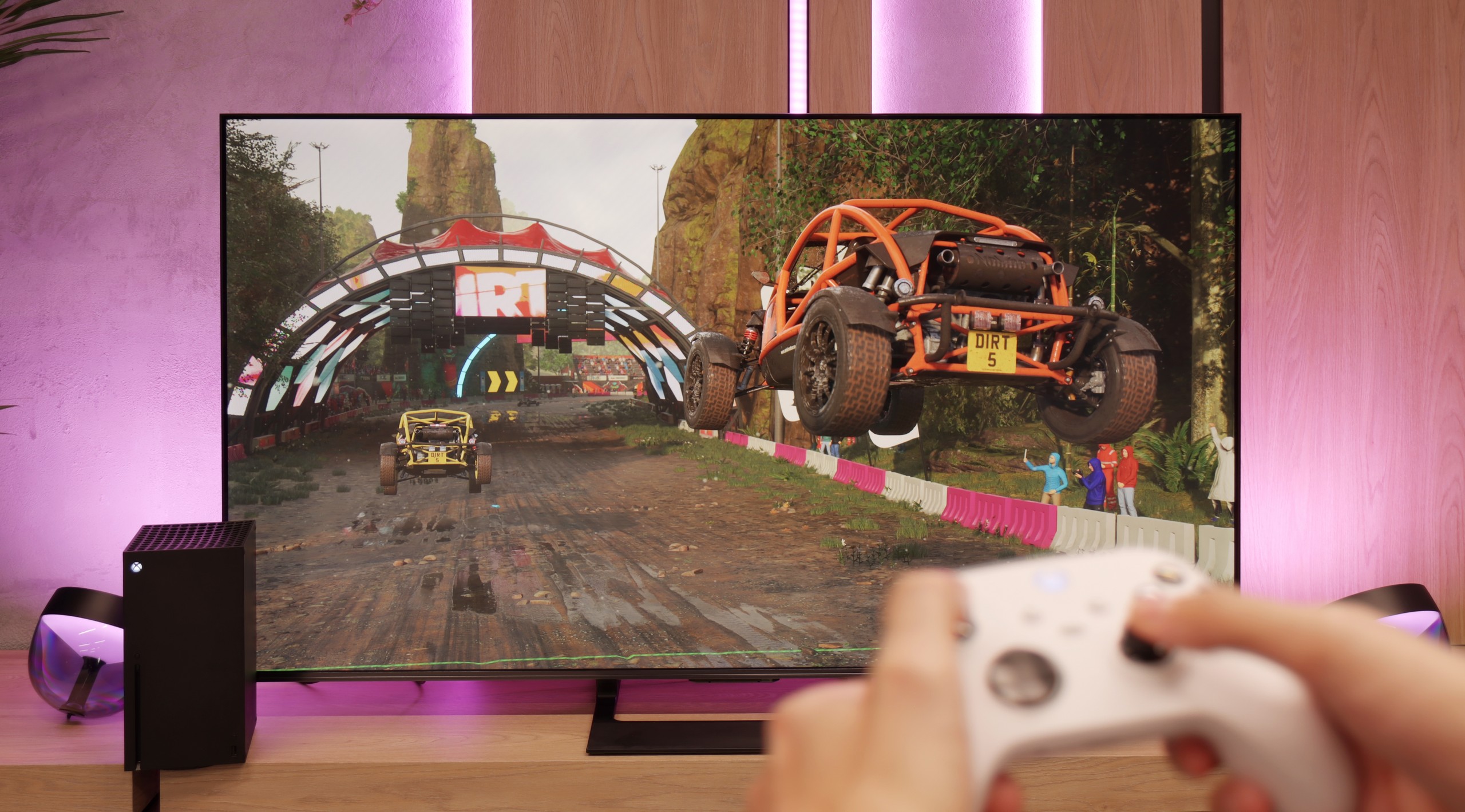
Philips OLED769 has been designed with gamers in mind, offering full compatibility with consoles and the highest quality gameplay. The television received the maximum rating in this category, providing everything your heart desires. With HDMI 2.1 ports fully supporting ALLM (Auto Low Latency Mode) and VRR (Variable Refresh Rate), the TV ensures smooth and hassle-free gaming. ALLM automatically switches the television to low latency mode, and VRR eliminates stuttering and screen tearing, resulting in smoothness and stability in gameplay. The Dolby Vision feature for gamers is another advantage, although it only works at 60 Hz. Most casual gamers will probably not feel the lack of a higher refresh rate, however, more demanding users may have some reservations. It allows for enjoying a dynamic range of tones and realistic images, enhancing the gaming experience. PC gamers will also not be disappointed, as the Philips OLED769 offers full compatibility with Nvidia graphics cards, thanks to support for G-Sync. This technology synchronizes the TV's refresh rate with the graphics card, eliminating tearing and stuttering, leading to excellent image smoothness.
Philips OLED769 is a television that perfectly meets the needs of gamers, offering a wide range of advanced features and technologies that significantly enhance game quality and user comfort.
The Hisense U7Q is a TV designed with gamers in mind – and you can see that straight away with its gaming capabilities. It has practically everything you could wish for: Variable Refresh Rate (VRR) – check, Auto Low Latency Mode (ALLM) – check, and high refresh rates of up to 240 Hz in Full HD, along with support for various resolutions, not just 4K. It’s truly an impressive set of features that makes the U7Q perform well with both fast-paced shooters on consoles and more demanding titles on PC. Of course – like most Hisense models – it lacks a proper implementation of the HGiG feature. It’s a shame because HGiG allows the console's brightness to be adjusted to the specific TV, which in practice makes it easier to display HDR games according to the creators' intentions. Without this, you just have to deal with some limitations in the final HDR image in games.
Input lag
9.8/10
9.7/10
SDR
HDR
Dolby Vision
The input lag of the Philips OLED769 is impressively low. At a refresh rate of 120Hz, values hovering around 5 ms are truly impressive, and at 60Hz, 13 ms is also an excellent result. Such low latencies provide a quick response to player movements, which is crucial for smooth and responsive gameplay. The only downside is the lack of support for Dolby Vision with content/games at a 120Hz refresh rate. Nevertheless, the TV still offers incredible visual experiences and excellent specifications that will satisfy any gamer.
The input lag on the U7Q is really impressive. With 120 Hz content, we achieved around 9 ms, and with 60 Hz – around 17 ms. These are fantastic results that make the TV great for even dynamic games requiring quick responses. It’s hard to fault anything here. Of course, as is often the case, the Dolby Vision mode in games seems a bit slower compared to standard SDR or HDR. This will be mainly noticeable for Xbox Series X/S console users, who are the only ones supporting Dolby Vision Gaming. Fortunately, the input lag still remains below 30 ms, so in practice, this is still an acceptable level even for more demanding gamers.
Compatibility with PC
7.6/10
8.6/10

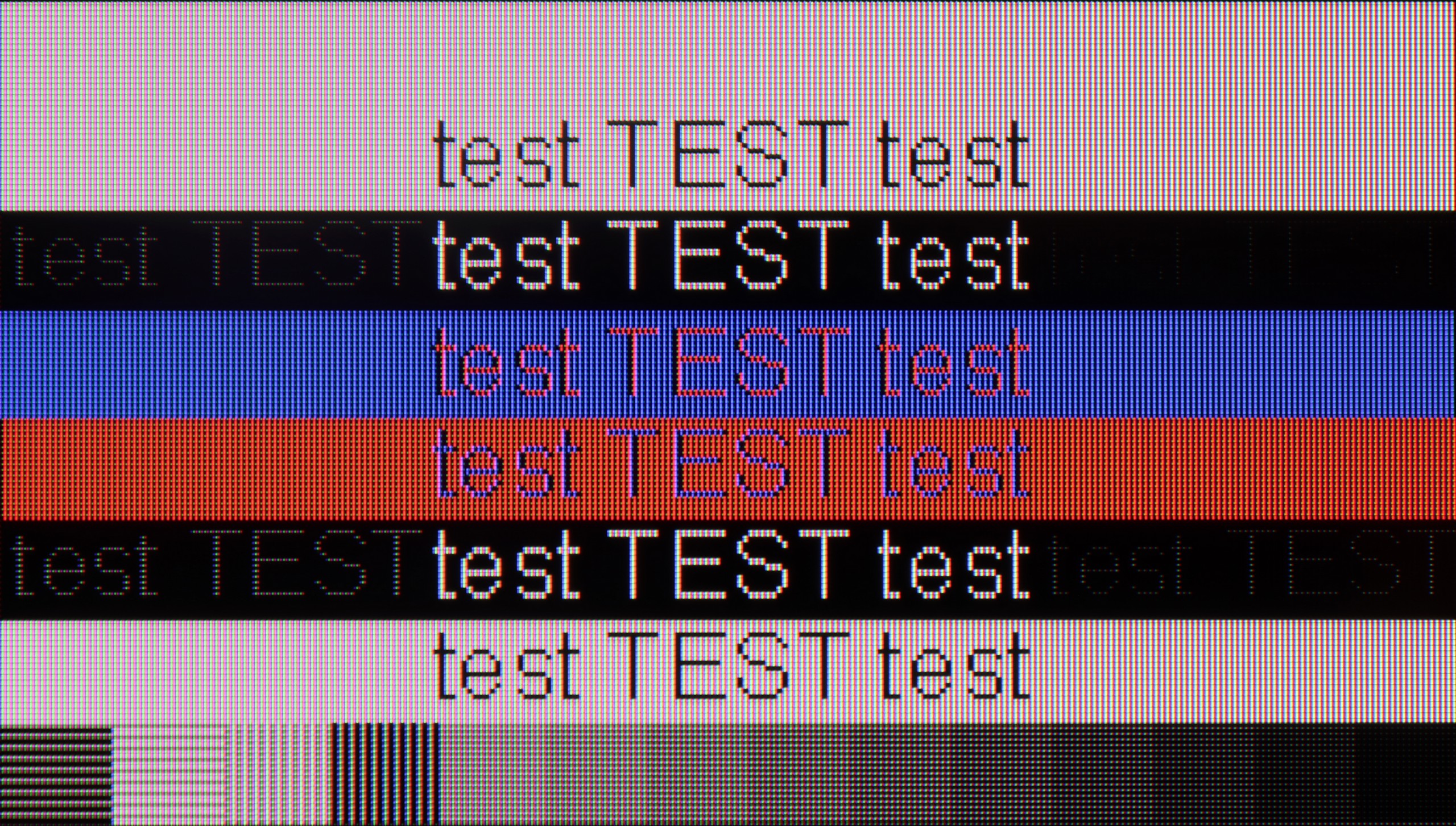
OLED769 works perfectly with PC computers. The rating in this category is very good, mainly due to the excellent readability of fonts, regardless of the background colour. The support for chroma 4:4:4 further enhances the image quality, providing clear and sharp details. The low response time is another advantage of this model, translating into smoothness and responsiveness during work and gaming. All of this makes the Philips OLED769 an ideal choice for PC users looking for a large screen with high image quality and excellent parameters.
The U7Q communicates great with the computer. For gamers, this is fantastic news – we have high refresh rates, low input lag, and G-SYNC support, making gaming from a PC an absolute pleasure. But the U7Q also performs well in everyday tasks. If someone uses a computer for text, web browsing, or office work – there’s nothing to nitpick about. The TV correctly handles chroma 4:4:4, so fonts look sharp and clear, without blurring or strange outlines. Both small and capital letters are simply legible – just as they should be.
Viewing angles
7.5/10
3/10
When it comes to viewing angles, Philips OLED769 performs exceptionally well, as is the case with all OLED TVs. The picture remains sharp and does not lose quality, regardless of the viewing angle. This means you can enjoy excellent picture quality, even when watching from the side or from more unconventional spots in the room. The only TVs that offer even better viewing angles are those equipped with QD-OLED and OLED MLA panels. These technologies can provide even greater stability and clarity of the image at various angles. However, compared to standard LCD TVs, Philips OLED769 still offers significantly better viewing angles, making it a great choice for large rooms and family movie nights.
The viewing angles on the U7Q are rather weak – that's just typical for VA panel characteristics. Directly in front, everything looks very good: blacks are deep, colours are saturated, and the contrast is high. But just moving slightly to the side is enough for the picture to start losing quality – colours become paler, and blacks begin to resemble dark grey. Compared to TVs with IPS panels, the U7Q performs worse, although on the other hand, it compensates with better contrast and deeper blacks.
TV efficiency during daytime
4.6/10
6.2/10

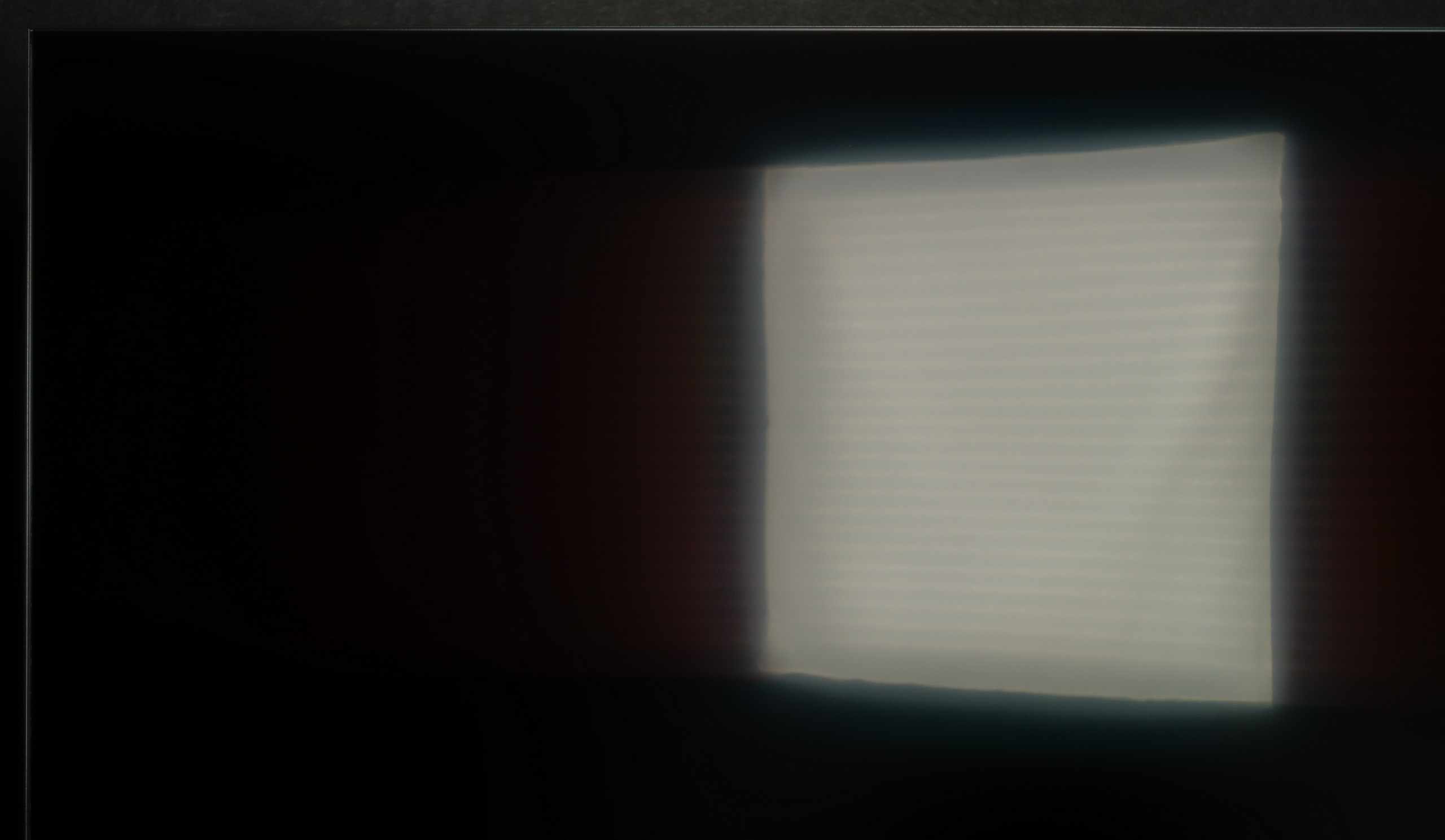

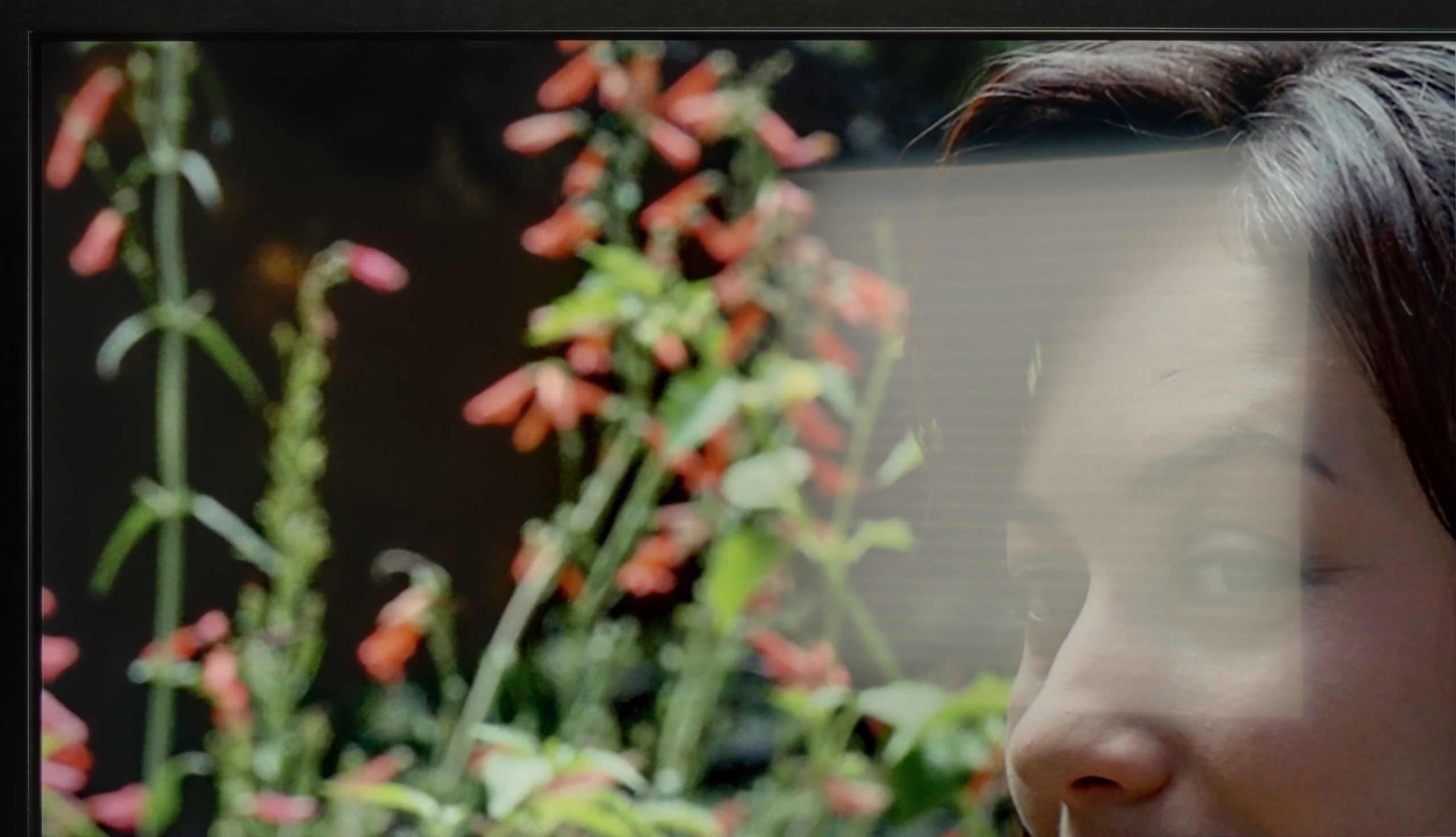
Matrix brightness
Average luminance SDR
Hisense U7Q: 519 cd/m2
Philips OLED769: 258 cd/m2
The performance of the Philips OLED769 TV during the day leaves a bit to be desired. The panel, despite being satin, reasonably suppresses reflections, which can be noticeable in bright rooms. The low rating is primarily due to the fairly mediocre brightness of the TV—250 nits is unimpressive and may not be sufficient to provide adequate image quality in strong daylight. This means watching on sunny days can be less comfortable, and image details may be harder to see.
The U7Q performs quite well in sunny rooms. Brightness in SDR mode averages around 520 nits, which practically means that even on a sunny day, you can comfortably watch television without the feeling that everything is drowning in reflections. Additionally, thanks to the satin coating on the panel, the television handles reflections well.
Details about the matrix
Subpixel Structure:

Panel uniformity:


Philips OLED769
Hisense U7Q
TV features
5.6/10
8.9/10
- HDMI inputs0 x HDMI 2.0, 4 x HDMI 2.1 48Gbps2 x HDMI 2.0, 2 x HDMI 2.1 48Gbps
- Other inputsRCA (Chinch)
- OutputsToslink (Optical audio), eARC (HDMI), ARC (HDMI), Mini-Jack (Headphones)Toslink (Optical audio), eARC (HDMI), ARC (HDMI), Mini-Jack (Headphones)
- Network InterfacesWi-Fi 2.4GHz, Wi-Fi 5GHz, Ethernet (LAN) 100MbpsWi-Fi 2.4GHz, Wi-Fi 5GHz, Ethernet (LAN) 100Mbps
- TV receptionDVB-T, DVB-T2, DVB-S, DVB-S2, DVB-CDVB-T, DVB-T2, DVB-S, DVB-S2
Classic features:
- Recording to USB (terrestrial TV)
- Recording programming
- Picture in Picture (PiP)
- RF remote control (no need to aim at the screen)
- Backlit remote control
- Teletext
- Audio only mode
- Possibility to connect Bluetooth headphones to the TV
- Possibility to simultaneously use Bluetooth headphones and the TV speaker
Smart features:
- AirPlay
- Screen mirroring (Windows Miracast)
- Wyszukiwanie głosowe
- Voice search in native language
- Ability to connect a keyboard and mouse

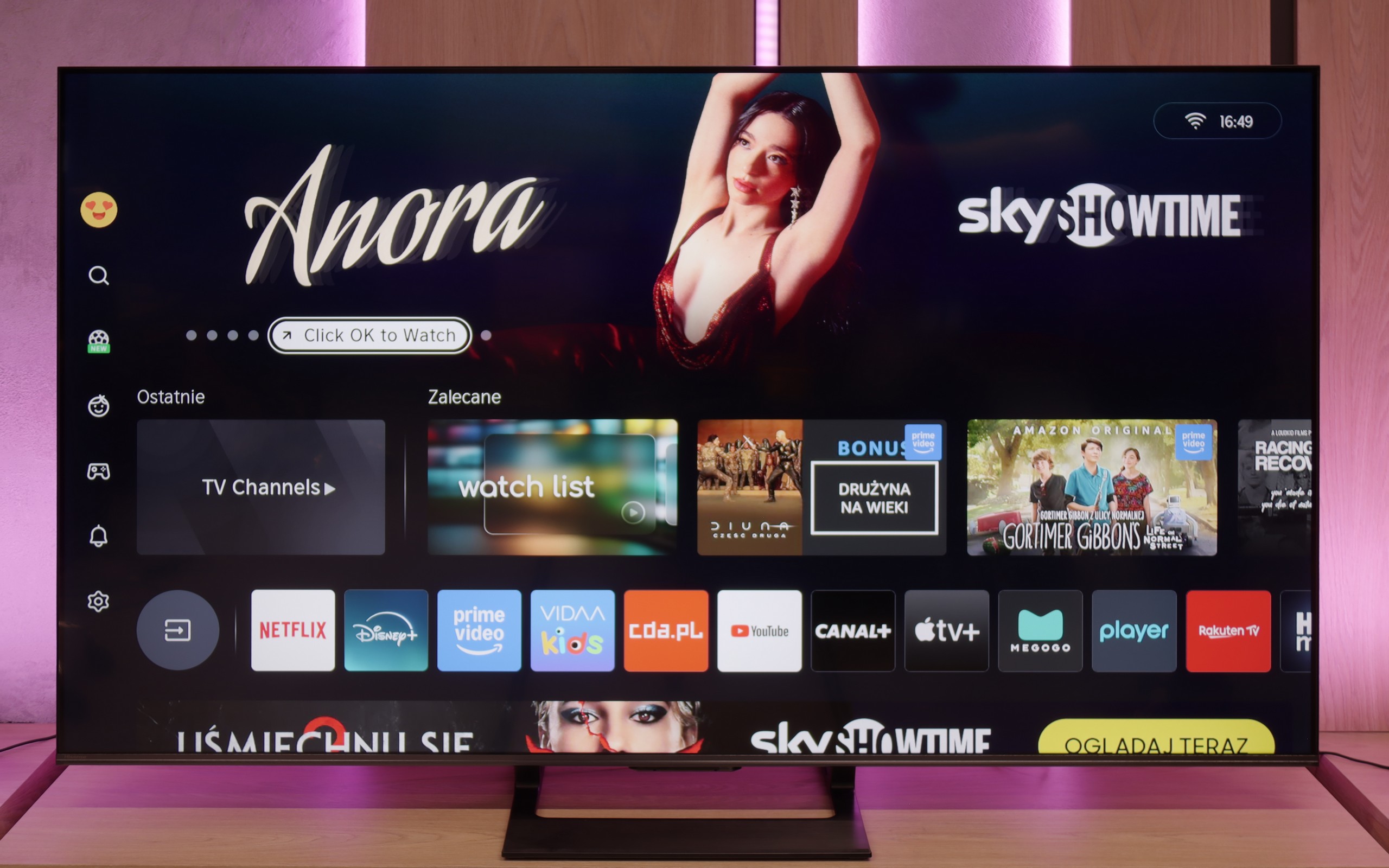

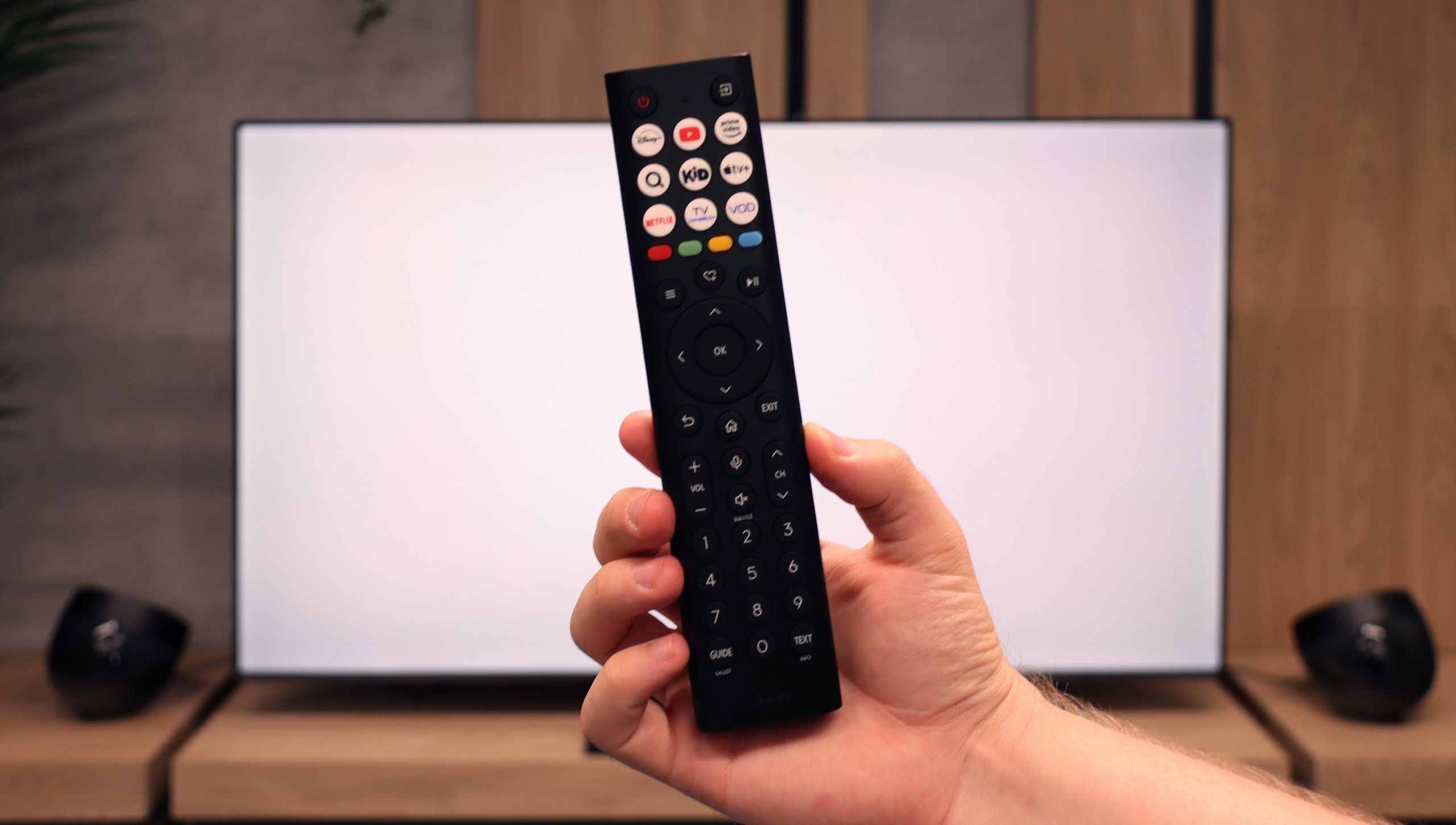
The biggest advantage of the Philips OLED769 television is undoubtedly the three-sided Ambilight system. This technology really makes a difference by extending the screen onto the walls around the TV and creating the illusion of a larger screen. It not only enhances the visual experience but also adds a unique atmosphere, whether we are watching a movie, playing games, or using other multimedia.
Interestingly, there is a new remote included with TVs featuring the TitanOS system. Thanks to its backlighting, it is very convenient to use; however, its wireless nature leaves something to be desired. The hybrid design means that sometimes you have to aim at the TV screen, while other times you don’t – depending on the button being used, which can be a bit annoying.
In the context of the operating system, Philips has introduced a new strategy for this year, replacing the previous open GoogleTV system with its own proprietary TitanOS. As with new technologies, TitanOS has its teething problems. It currently offers only a few basic applications, and the app store doesn't impress with its variety. This may disappoint some users who expect a wide range of available applications. Furthermore, the lack of support for AirPlay and the ability to record to USB are additional limitations that may be problematic.
Classic features of U7Q
Hisense U7Q really has a lot to offer when it comes to classic TV features. You can record shows onto USB, easily connect external devices via Bluetooth, and the interface – such as the EPG – is clear and readable. It may sound like something that mainly seniors would appreciate, but the truth is that U7Q has practically everything needed for watching classic television. The only thing missing here is the PiP (picture-in-picture) feature.
Smart TV U7Q: Vidaa
When it comes to smart features, U7Q runs on the proprietary VIDAA system. And I must say – it runs really smoothly. Voice search in Polish? No issues at all. AirPlay and screen mirroring? They also work without a hitch. Of course, one must be aware that VIDAA is a closed system, so – as is often the case – it lacks a few popular apps, especially those related to music. Therefore, it’s worth checking before purchasing to see if all the apps you use daily are available.
Playing files from USB
8.2/10
8.2/10
Supported photo formats:
Maximum photo resolution:


The built-in player in Philips OLED769 generally performs well. Although it may lack support for non-standard formats, which could be an issue for specific users, most should be satisfied with the available options. The built-in player in the TitanOS system allows for the reading of Polish characters and changing the font colour, which additionally makes everyday usage easier. Thanks to these features, playing files from USB is comfortable and versatile.
The built-in player in the U7Q completely meets the needs of most future users. The television effortlessly supports Polish characters and most popular video, audio, and photo formats. If we had to nitpick, it would only be the limited support for certain photo resolutions – there are times when files from the camera are not displayed correctly. So it’s worth keeping this in mind if you plan to show photos straight from a DSLR or phone.
Apps
6.2/10
7.7/10














































Sound
6.7/10
7.2/10
- Subjective sound quality:6.7/107.2/10
- Dolby Digital Plus 7.1:
- Dolby True HD 7.1:
- Dolby Atmos in Dolby Digital Plus (JOC):
- Dolby Atmos in Dolby True HD:
- DTS:X in DTS-HD MA:
- DTS-HD Master Audio:
In the sound category, Philips OLED769 may not offer super dynamic sound, using 2x10W speakers. However, it is worth noting the support for all Dolby and DTS audio formats. This allows users to enjoy high-quality sound with the help of external players, despite the power limitations.
Sound is one of the biggest advantages of the U7Q. The TV plays really nicely – there's a slight discernible bass, good tonal balance, and it's definitely more than just for "casual news watching." You can easily play music on it and just sit back and enjoy the sound – of course, in an entertainment sense, not an audiophile one 😉. A big plus is also the full support for the most important audio codecs, which worked flawlessly. The only exception is Dolby Atmos in TrueHD format, which didn’t fully work when connected to the home theatre, so if someone uses that format – it's worth keeping in mind - perhaps it's a software glitch.


